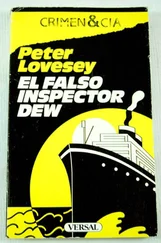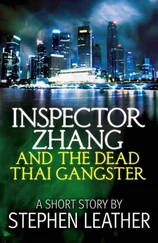Seichō Matsumoto - Inspector Imanishi Investigates
Здесь есть возможность читать онлайн «Seichō Matsumoto - Inspector Imanishi Investigates» весь текст электронной книги совершенно бесплатно (целиком полную версию без сокращений). В некоторых случаях можно слушать аудио, скачать через торрент в формате fb2 и присутствует краткое содержание. Жанр: Детектив, на английском языке. Описание произведения, (предисловие) а так же отзывы посетителей доступны на портале библиотеки ЛибКат.
- Название:Inspector Imanishi Investigates
- Автор:
- Жанр:
- Год:неизвестен
- ISBN:нет данных
- Рейтинг книги:5 / 5. Голосов: 1
-
Избранное:Добавить в избранное
- Отзывы:
-
Ваша оценка:
- 100
- 1
- 2
- 3
- 4
- 5
Inspector Imanishi Investigates: краткое содержание, описание и аннотация
Предлагаем к чтению аннотацию, описание, краткое содержание или предисловие (зависит от того, что написал сам автор книги «Inspector Imanishi Investigates»). Если вы не нашли необходимую информацию о книге — напишите в комментариях, мы постараемся отыскать её.
Inspector Imanishi Investigates — читать онлайн бесплатно полную книгу (весь текст) целиком
Ниже представлен текст книги, разбитый по страницам. Система сохранения места последней прочитанной страницы, позволяет с удобством читать онлайн бесплатно книгу «Inspector Imanishi Investigates», без необходимости каждый раз заново искать на чём Вы остановились. Поставьте закладку, и сможете в любой момент перейти на страницу, на которой закончили чтение.
Интервал:
Закладка:

Seichō Matsumoto
Inspector Imanishi Investigates
First published in 1961 in Tokyo under the Japanese title Vessel of Sand (Suna no Utsuwa)
Translation copyright © 1989 by Seicho Matsumoto.
Translator’s note: Names in the text are in Japanese order with family name first.
Translation of: Suna no utsuwa.
ONE Kamata Railroad Yard
The first train on the Keihin-Tohoku Line was scheduled to leave Kamata Station at 4:08 a.m. The engineer, the brakeman, and the conductor left the night duty room shortly after 3:00 a.m. to go to the rail yard. It was dark and cold.
When the young brakeman shone his flashlight under the seventh car, he stiffened, stood still swallowing for a moment, and then began to run, his arms flailing. He flung himself into the engineer’s cab, shouting, “Hey, there’s a tuna .”
“A dead body?” the engineer laughed. “We haven’t even moved the train yet. How could there be a tuna? Rub your eyes and wake up.”
“No, I’m not mistaken.” The brakeman looked pale. “I really saw a tuna under the train.”
The engineer and the conductor decided to go see for themselves. When the brakeman shone his flashlight under the seventh car, they saw a human form lying on the rails just in front of the wheels. It glistened in the beam of light. The engineer bent over to look closer. “Ugh, it’s horrible!” he screamed.
The three men stood for a while staring at the body. Then the conductor said, “Call the police immediately. We don’t have much time.” It was only twenty minutes before the 4:08 departure time. The engineer ran back to the office.
“This is an unpleasant business, first thing in the morning,” the conductor said to the brakeman. “I wonder what happened. The wheels haven’t moved at all, but his face is covered with blood.”
The corpse’s face looked like a red devil’s mask. The head lay pillowed on one rail, the thighs across the other. If the train had started, the face would have been crushed and the hip joint severed by the wheels.
The sky became lighter. By the time the police investigators arrived, the lamps in the railroad yard had been turned off. Chief Inspector Kurozaki Hajime of the Homicide Division was accompanied by eight members of the Homicide and Criminal Investigation divisions.
The rail car involved was left on the tracks, while the others were detached and towed out of the yard. Criminal investigators scurried around this car. They took photographs, sketched diagrams, and drew in red lines on a borrowed map of the railroad yard. When the scene had been recorded, the body was dragged out from under the car. It was that of a man whose face had been battered to an unrecognizable pulp. The eyeballs had nearly popped out, the nose was smashed, and the mouth was split open. The gray hair was matted with blood.
The autopsy revealed the following:
Age: About 54 or 55; slim build.
Cause of death: Strangulation.
Numerous bruises and fractures on almost the entire face; on the arms and legs injuries and fractures accompanied by abrasions and welts.
Contents of the stomach: Light yellowish brown, slightly thick liquid (including alcoholic content) mixed with partially digested peanuts. Chemical analysis indicates the presence of a sleeping powder.
Conclusion: From the above evidence, it is presumed that the victim drank some sleeping medicine dissolved in whiskey, and then was strangled; afterward, he was beaten with great force by a blunt-edged instrument (such as a rock or a hammer).
Time elapsed since death: Three to four hours.
The victim had been wearing a cheap suit, shirt, and underwear, none of which had laundry markings. He seemed to have been a poor laborer, but the police found nothing to indicate his identity. It was assumed that he had been murdered between midnight and one o’clock in the morning.
The murderer had viciously battered the victim’s face after death, indicating that the criminal was someone who hated the victim a great deal, or that the murderer had intended to destroy the face totally in order to prevent identification of the body. The investigation team concluded the crime had not been motivated by robbery but was a murder committed by an acquaintance of the victim acting out of hatred, perhaps a crime of passion.
The first step was to identify the victim. Investigators started their questioning in the area around Kamata Station.
The previous night, two people, who might have been the victim and his companion, had been seen at a Torys bar (one of a chain of cheap bars) located near the station. The employees of the bar and the customers who had been there were called in for questioning. According to the bartender and hostesses, the two men had never been in before. They had entered the bar at about 11:30 p.m. The time was fixed by a woman customer, an office clerk, who had been concerned about missing the last Mekama Line train. Memories were vague about the faces of the two customers. Everyone agreed that one definitely had hair that was quite gray. As to the other, some of the witnesses said he was thirty, others that he was about forty years old, and still others that he seemed much younger.
After statements had been taken from the bar staff, bar customers, and a pair of guitar players who passed by the two men outside the bar, the only fact they all had agreed on was that the victim’s accent was of the Tohoku region in northeastern Japan, a dialect with thick zu-zu sounds. The younger man seemed to be speaking in standard Japanese.
None of the witnesses questioned knew what the subject of the men’s conversation had been. They had sat in a booth near the door leading to the rest room. The staff and customers, going back and forth, had overheard only fragments, a few words, a phrase. But Sumiko, a bar hostess, recalled that the younger man had said to the victim, “Kameda must be the same even now.” A second bar hostess had also overheard the word “Kameda.”
What had been meant by “Kameda”? The investigation team concluded that the victim and his assailant were old acquaintances who hadn’t seen each other for a long time, that they had accidentally run into each other, and then stopped off at a nearby bar. In their conversation, the topic of their mutual friend, Kameda, had come up. It could be inferred that the gray-haired man had either recently seen or had kept up his friendship with Kameda, while the younger man had not seen Kameda for a while.
Other bits of the conversation included phrases such as “nostalgic.” “since that time things haven’t gone as I had hoped,” and “I’ve finally gotten used to this kind of life.” These were spoken mainly by the victim, the man with the heavy accent. Hardly any of the younger man’s words had been heard because he spoke in a low, muffled voice and, whenever someone walked by to go to the rest room, averted his face. The only words attributed to this man were “Kameda must be the same even now.”
The young man who had appeared in the Torys bar with the victim was considered to be the prime suspect. It was decided that inquiries would be made for him and the victim at cheap apartments and inns in the Ota-ku area of Tokyo, where the Torys bar and Kamata Station were situated.
The evening papers carried large articles on the crime. If the victim had a family, relatives would surely contact the police. But two days later no missing persons report had been filed, and the investigation team that had searched Ota-ku had found no leads.
A meeting of the investigation team was called. Someone suggested, “Just because he was drinking in a bar near Kamata Station doesn’t necessarily mean that he lived in the area. Kamata Station is the junction of the National Railway Line, the Mekama Line, and the Ikegami Line. The victim could have lived near the Mekama or Ikegami lines.” That would expand the area of investigation but general opinion favored this hypothesis.
Читать дальшеИнтервал:
Закладка:
Похожие книги на «Inspector Imanishi Investigates»
Представляем Вашему вниманию похожие книги на «Inspector Imanishi Investigates» списком для выбора. Мы отобрали схожую по названию и смыслу литературу в надежде предоставить читателям больше вариантов отыскать новые, интересные, ещё непрочитанные произведения.
Обсуждение, отзывы о книге «Inspector Imanishi Investigates» и просто собственные мнения читателей. Оставьте ваши комментарии, напишите, что Вы думаете о произведении, его смысле или главных героях. Укажите что конкретно понравилось, а что нет, и почему Вы так считаете.










